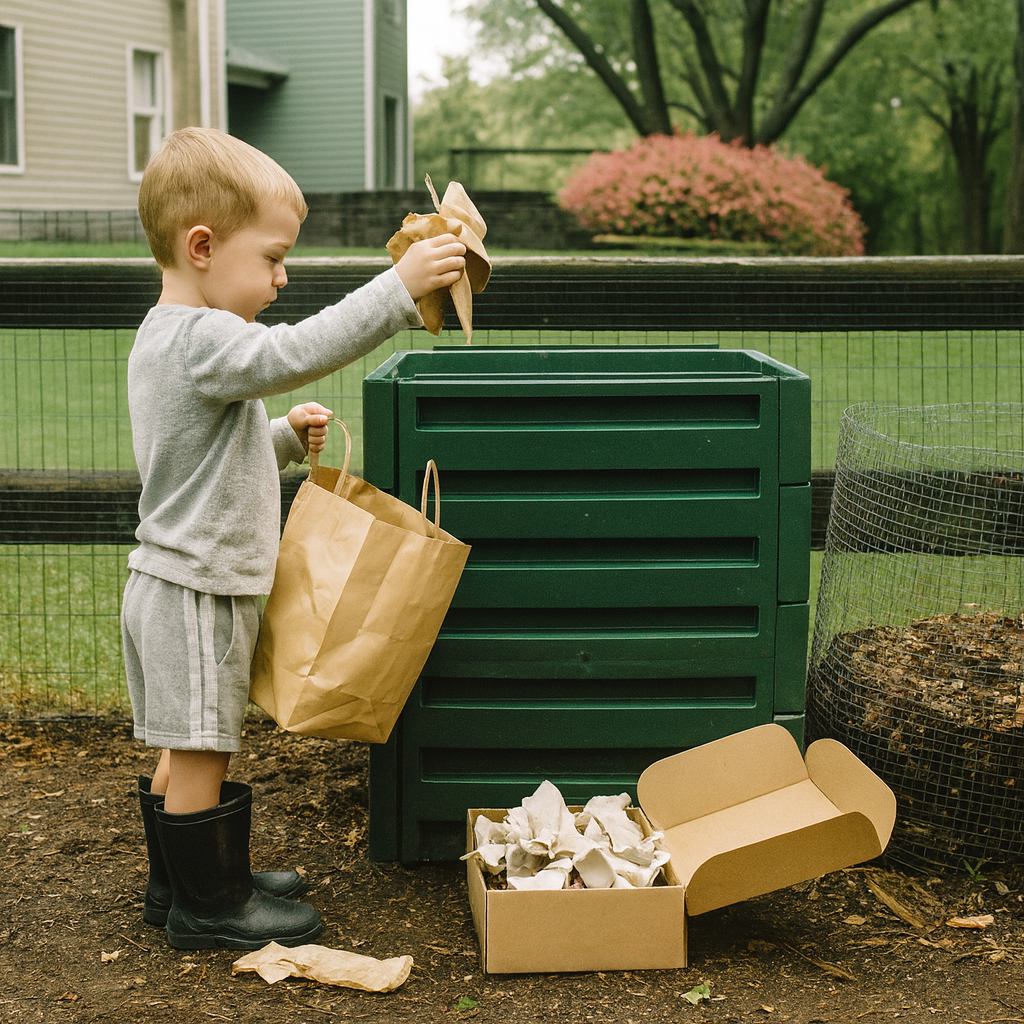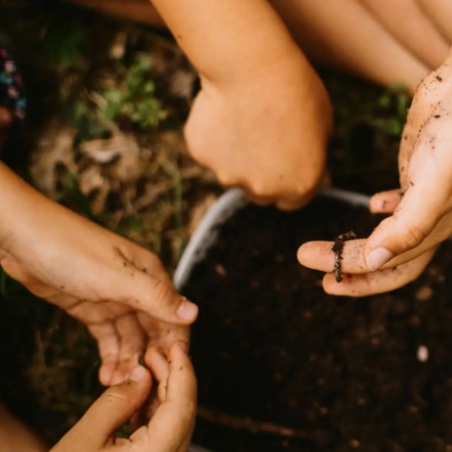
Children and Composting: How to Involve the Little Ones in Eco-Friendly Habits
Education for sustainability begins at home – with small daily steps that children see, understand, and imitate. One of the best ways to show them the power of nature is through composting. Playful, simple, and meaningful – it turns waste into new life.
🌿 Why involve children in composting
Children are naturally curious about the world around them. Composting helps them understand:
- the cycle of life in nature – from apple peel to a new plant,
- the value of waste – that “waste” isn’t the end, but the beginning,
- responsibility – that even small actions can make a big difference.
🪱 Tips for starting at home
- Create a family mini composter – use an old bucket, a wooden box, or a garden corner. Give it a name – for example, Composti 🐛.
- Collect “treasures” together – peels, tea bags, eggshells. Explain what belongs in the compost and what doesn’t.
- Observe the changes – watch how materials transform. You can keep a “compost diary” with photos or drawings.
- Turn it into a game – create an “eco detective game” – who can find the most compostable things in the kitchen?
- Use the finished compost – show children how plants thrive thanks to it.

🌸 DIY projects for little eco-enthusiasts
- Build a worm hotel – a simple container with soil, leaves, and worms to observe decomposition.
- Paint signs “goes here – doesn’t go here” – a colorful way to remember what belongs in the compost.
- Plant a seed in your own compost – the best reward for patience.
💛 Learning through play
From activities like these, children gain more than knowledge – they build a connection to nature and understand that even a small household can make a big environmental impact.
Conclusion:
Composting with children isn’t just about waste – it’s about connection, observation, and learning through contact with the earth. Let children discover that being eco-friendly is fun, not a chore. 🌍💚